 Every mother struggles to bring all that she has to the family table. We all want to teach our children to be kind, to have manners, to be honest, to do their chores, to share, and on and on. We also want to teach skills that can help them as adults. We desire to encourage them to develop talents for the joy of it. It can feel daunting.
Every mother struggles to bring all that she has to the family table. We all want to teach our children to be kind, to have manners, to be honest, to do their chores, to share, and on and on. We also want to teach skills that can help them as adults. We desire to encourage them to develop talents for the joy of it. It can feel daunting.
But there is something else that many of us struggle with; we want to have meaningful ‘family learning’, where our families connect and where the connection we create is passed down. That can often seem even more challenging because of the time and effort it can take. This is not something that we can give to our children by our example or our way of being.
I am talking about what we do as a family that is uniquely our own, that is passed on because we did them together and they became part of us. Today we are going to tackle this sticky wicket and see how it can be done, even if you have felt that you are failing at this or if you don’t even get what I’m talking about. : )
THE MAGALEI FAMILY THING
I want to introduce you to my friend Quincy Magalei, a homeschooling mom. We met via the internet. Years ago, Quincey discovered my blog and then bought my book, Becoming a Present Parent. She signed up to receive my newsletter and followed me through the years, reading what I wrote.
Quincy has seven children. Last year she and her husband took over the care of two newborns with severe special needs. They require a vast amount of time and need willing hands and hearts to care for them. That is when I heard from Quincy in person. She knew it was going to be more than she could manage alone and felt she should set a few things in place so the chances of success would be greater.
Quincy knew she and her husband would be very short on sleep and time. The babies were needy and on oxygen. There were going to be lots of doctors’ appointments and therapy. How to do this and still homeschool? Quincy reached out to me for friendship, ideas, and a safe place to talk.
This last December, in one of our conversations, Quincy mentioned a concert that she and her children were giving in Heber City, Utah. That would be an eighty-minute drive from my home, into the mountains, and at night. : ) But there was no snow, which was unusual, so I decided to attend.
The concert was held at the Wasatch County Senior Center, which also houses the library. A perfect place. There was a good crowd on that night because of the lack of snow. : ) The concert was amazing. There was audience participation, amazing vocals, musical numbers, and good-hearted joking around. Quincy played the piano, as did some of the children. Her husband played guitar and ukulele. The children played guitars and violins. Her twelve-year-old son, Ezra, did some beatboxing and he was good! He began learning this skill at age nine. Asher, one of the 6-year-old twins sang with the Bigs because he loves singing. Ehli has a natural talent but is not yet as engaged. However, he participates because this is a family thing, it’s what they do!
I enjoyed myself thoroughly, as did my mom. I will attend other concerts they give because it was worth the drive. It was wonderful to observe a family doing their thing together. It was moving to see them connecting. It was hopeful to see what a father and mother can do together when they want to share something with their kids, despite the odds against it.
After the concert, I asked Quincy how in the world did her children learn to sing like this, play instruments, and perform together. I really wanted to know. I didn’t think I had done anything like this with my family. Why not? I could sing. My husband played an instrument. Did we fail?
She said the whole idea was born years ago because she wanted to give her children a chance to learn music and then provide a place for them to perform. But how? It was intimidating and would require time and effort. Then she saw another family singing together and was astonished. She had no idea that was even possible, all the littles to bigs, performing together. This pricked her heart and gave her hope and 20 years later her family is doing the same. It wasn’t easy. They were homeschooling seven children. Her husband worked. But the desire to do something as a family was strong, they loved music, and it helped them overcome the barriers.
When they lived in Oregon they performed in the homes of widowers/widows and for older couples they knew from church. When they moved to Utah, they continued the tradition. Then they were asked to sing at the senior center. Quincey began setting up concerts. They honed their gifts, talents, and skills as a family, over time. I want to tell you they are GOOD and sang one song that was so challenging I couldn’t believe they were doing it!
Quincy said that this concert, where all her family was together, was the highlight of her life and worth the time and effort. She told me she was proud of what they had accomplished as a family. I loved these words from her – “It demonstrates the synergy of working with God and trusting yourself; then watching the results while being sustained by grace in every moment.”
Despite the uphill battle and the addition of two special needs babies as they began working on last year’s concert, she said her efforts were magnified in a way she had hoped and prayed for. As she said, “God makes us more than we are alone and fills our hearts and souls in the process.”
But what about me and the fact that I didn’t teach my children to sing or play instruments when Don and I could have? I was a self-taught professional cake decorator too. I made fabulous wedding cakes which were my specialty. But I never taught my kids. Two of my daughters went on to teach themselves and I am proud of them. I was also a terrific seamstress, but I only taught my last two children to sew. Hmmm, did I fail my family? This is a question I have heard other women ask themselves when they see what other families have accomplished. This is a question we each need to examine.
OUR FAMILY THING
Every Sunday for many years, after church, I would take my children to the care center to visit the elderly. They would read to the people, tell jokes, and visit. I took them to the homes of older people and visited. We served in this way as a family often. Today, none of my children are put off by where people are at, special needs, elderly, ill, homeless. They can talk to anyone, and they do. They have hearts that are tuned to those in need.
That is why my son, Seth, is one of my granddaughter Maggie’s, favorite people. Maggie has severe cerebral palsy. She can’t walk or speak. But Seth knows how to talk to someone who can’t talk back. He isn’t the least put off by her situation. He knows that every person wants to laugh and be seen. In fact, every member of our family, even those who have come in by marriage, knows how to spend time with Maggie.
My daughter Jenny, despite a brain injury, has a master’s degree in communication science and disorders. She works with the elderly helping those with communication impairments, swallow deficits, and cognition. She has told me that her experiences at home moved her in this direction after her accident.
My daughter Jodie regularly takes her children to help the homeless. They pass out cocoa and cookies. They smile. They shake hands. They listen.
All my children serve the underprivileged, the needy, the elderly, and the ill. It was a family thing, and I didn’t even realize it at the time. It was the connecting family activity that left home with our children and is being passed down.
OTHER FAMILIES AND THEIR THINGS
Let me tell you about another mom that I just met a couple of months ago, Emily. She cuts my hair in her home studio. At one appointment the Magalei family came up in our conversation and Emily lamented that she wished she had time to do something like that for her kids. She is a very good seamstress and felt like a bit of a failure because she hasn’t made time to teach this skill to her children. : ) Then our conversation moved on.
I discovered that this family hikes. She said that even her three-year-old is a great hiker. They have hiked in many places. They do it whenever they want to be together as a family. They all love it. She and her husband have taught their kids how to enjoy the outdoors and be safe. I told her that this is a legacy as powerful as what Quincy has given her children or what I gave to mine. It just happens on different stages. Quincy’s family is on a stage in a community center. Emilie’s is on the side of a mountain, and for my family, it is in the halls of the ill and afflicted.
Another mother I know has a son who was obsessed with rocks. It became their family thing. They went to digs and planed vacations around where rocks could be found. They collected, sorted, and displayed them. They spent time in mineral and geology museums. They had constant family conversations on the subject. This is what they did as a family.
Another family I know skies together. They spend whatever time they can every winter skiing. And when possible, do it on the water in the summer. This is their family thing.
I didn’t realize what our family thing was at the time. It would have been helpful to me to have figured that out. I would have been more confident in the job I was doing. It was helpful to my hairdresser, Emily, when she realized that they did have something that was a family thing.
So, I am asking you. What do you do to connect as a family? It is there if you look at where you spend your time together. Is it something that bonds and connects you as a family? If not, then what would accomplish that? As you can see it doesn’t need to be 20 years of teaching your kids to sing and play on stage. So don’t be intimidated. That was Quincy’s dream. Mine was more modest, but in the end, just as meaningful.
What matters is that we have something we do regularly as a family that we all enjoy, that bonds us and helps us connect. Bowling. Skating. Sewing. Baking. Hiking. Reading together. Fishing. Hunting. Serving at nursing homes. Science. What is your family thing? Begin observing your family and your regular activities. What do you do to connect?

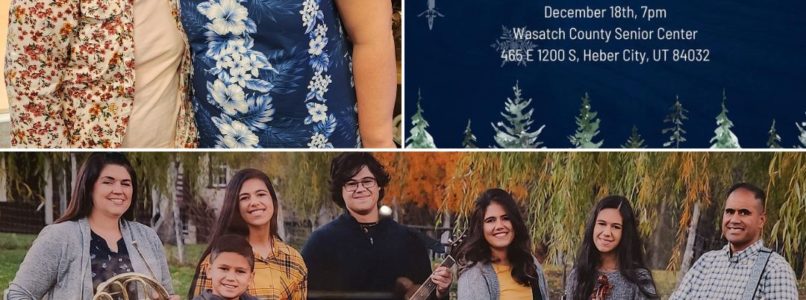
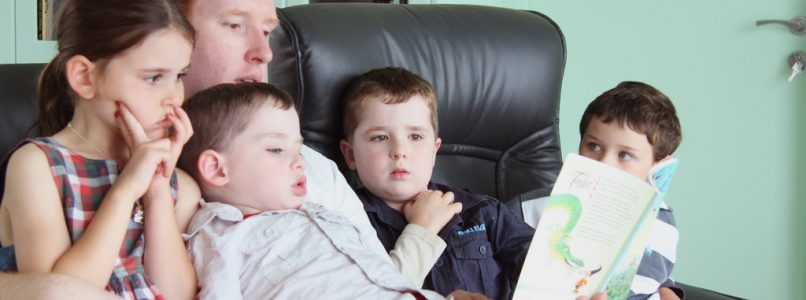
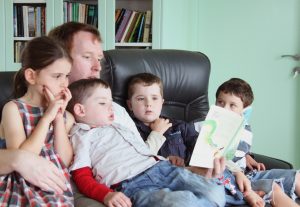 Tightly knit families with good relationships don’t just happen. We have to have some idea of what we want and then take one small step towards that bigger picture.
Tightly knit families with good relationships don’t just happen. We have to have some idea of what we want and then take one small step towards that bigger picture.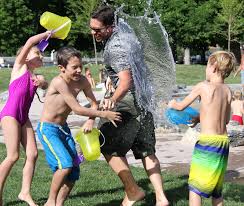 want to have a culture of togetherness we have to do something new. We have to take a small step and then be consistent. Simple/small things done consistently over time bring big results.
want to have a culture of togetherness we have to do something new. We have to take a small step and then be consistent. Simple/small things done consistently over time bring big results.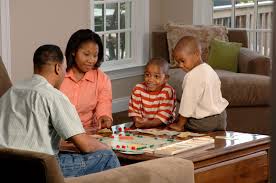 You might consider one evening a week doing something as a family. Keep it simple. Take a walk, play a board game, or serve someone.
You might consider one evening a week doing something as a family. Keep it simple. Take a walk, play a board game, or serve someone.